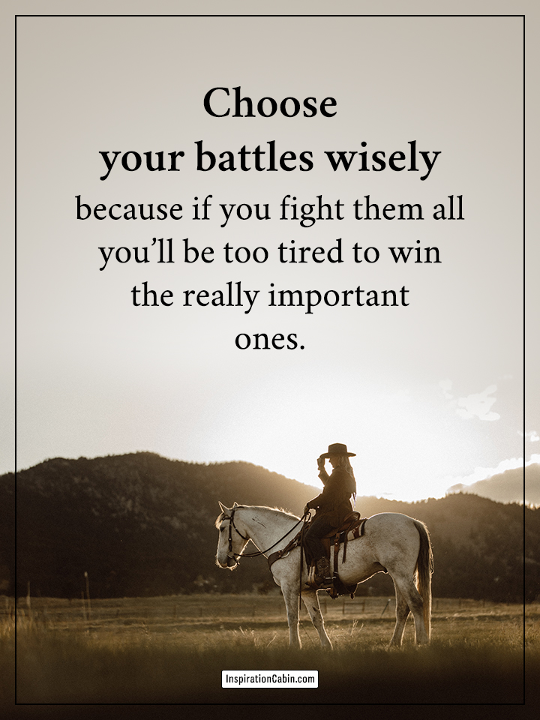Welcome to this topic of Management styles and strategies.
Our aim in this module is to:
- Outline the various management styles and strategies to handle conflict.
- Understand mistakes and learn the outcomes of conflict.
Conflict is inevitable, but combat is optional.Max Lucade
Conflict is an inevitable fact of life. It is borne out of differences and may arise when people are required to interact with one another. Conflict occurs when people's interests or different psychological points of view intersect within a shared workspace.

Be prepared; conflict will happen on your projects one way or another, and how you respond to and resolve these issues as a manager will limit or enable your team's success on site.
Understanding conflict and learning your conflict management pattern will empower you to make more effective choices and decisions when faced with this conflict.
When conflict is mismanaged, it can harm all relationships. When managed respectfully and positively, these situations allow the team to strengthen the bond between people ultimately.
By embracing conflict as a part of work life, you can make the most out of each situation and use it as a learning or leadership opportunity.

An essential aspect of being a good leader is understanding how to manage and handle these conflicts.
Without having an insight into these conflict management handling styles and a correct way to implement them in situations, you as a manager could be left handling conflict without a guideline or blueprint.
In saying that, knowing your management style will improve your self-awareness in those situations.
The Thomas-Kilmann Conflict Mode Instrument
As referenced by Myers-Briggs, the Thomas-Kilmann Conflict Mode Instrument (T.K.I.) depicts five different styles of conflict management and their associated behaviour. Not everyone has "the gift of the gab" or the ability to speak easily and confidently.
However, quickly identifying where you sit within the five different styles can help you address any situation calmly and confidently.
Accommodating
As a supervisor, accommodating practices is knowing when not to be assertive.
Accommodating behaviour is shown when an individual neglects their concerns to satisfy those of another. Accommodators are often motivated by a genuine desire to get along with other team members. They often believe that giving in to others serves the group's needs.
Watch out!
- A team member can be perceived as weak if they accommodate too often.
- Accommodating larger or more important issues can not solve issues in a meaningful way.
- Accommodating conflict style can be at the expense of the individual or team's goals.
Avoiding
As a supervisor, avoidance practices are knowing when to withdraw or be neutral.
When members are unable or unwilling to accomplish their own goals or contribute to achieving the group's goal, they may adopt this avoidance conflict style.
Sometimes, members who care about the group and its goals may adopt the avoidance style because they are uncomfortable or unskilled at asserting themselves.
Watch out!
If used in the wrong situations, this technique will make conflicts worse. Managers can seem incompetent if they overuse avoidance because employees will think they cannot handle disagreements.
Collaborating
As a supervisor, collaboration practices are knowing when to involve team members.
The collaborative conflict style searches for new solutions that will achieve both the individual goals of group members and the goals of the group. Instead of arguing over who is right or wrong, the collaborative group seeks creative solutions that satisfy everyone's interests and needs. Collaboration promotes synergy and resolves the dialectic tension between assertiveness and cooperation. It also "involves trying to find an 'integrative' (or win-win) solution" that allows the group to progress toward achieving its common goal.
Watch out!
This style of conflict management is time-consuming. Deadlines or production may have to be delayed while solutions are found, which might take a long time, depending on the parties involved and can lead to losses.
Competing
As a supervisor, competition practises is knowing when to apply competitive strategies to encourage participation.
The competitive conflict style occurs when group members are more concerned with their own goals than with meeting the group's needs. Competitive members want to win; they argue that their ideas are superior to the alternatives others suggest. When used inappropriately, the competitive style may be characterized by hostility, ridicule, and personal attacks against group members. Approaching conflict competitively can divide group members into winners and losers. This may damage the relationships among group members.
Watch out!
Managers using this style will be seen as unreasonable and authoritarian. Handling conflicts by crushing any dissent will not lead to happy, productive employees, nor will it lead to finding the best solutions in most cases.
Compromising
As a supervisor, compromising practises is knowing when to be mid-way in assertiveness and cooperativeness.
When compromising, an individual seeks an expedient, mutually acceptable solution.
Compromise means a dispute settlement in which two or more sides agree to accept less than they originally wanted. The compromising conflict style is a "middle ground" approach that involves conceding some goals to achieve others. When group members compromise, each member is willing to suffer some losses in exchange for gaining something else. Group members who approach conflict through compromise argue that it is a fair method of resolving problems since everyone loses equally.
When each person gives up something to meet the others halfway, the result is only partial satisfaction for all concerned.
Watch out!
No one leaves completely happy. Sometimes, one side might feel they sacrificed too much and be unwilling to compromise again. Managers who rely on this technique will burn up their employee's goodwill and be seen as unable to execute collaboration.
Applying the appropriate management style

Each style is useful, depending on the situation, but remember, some are weaker than others and should not be relied upon too heavily.
Conflict is unavoidable. Most organizations know this and prepare their management with the proper conflict management skills to handle and resolve workplace conflicts quickly and peacefully.
Once you know your style, you can pay attention to whether that style works for you and your team. If not, maybe you should explore a different alternative to work with.
Have a go at filling out this self-assessment document on managing conflict.
Conflict Management Strategies
Now you know the style you possess as a leader, the next step is recognising potential strategies to implement when the needs must be met.
Organisations must develop strategies to address and resolve conflict situations according to the identified possible causes to maintain productivity and promote effective working relationships.
In this context of workplace conflict, it refers to any method, action or activity designed to create and maintain positive workplace relationships.
Strategies have often been based on successful conflict management styles and follow New Zealand legislation where applicable.
By organisational requirements, strategies will include recording conflict and the outcomes taken.
The following are just some of the top methods used for managing conflict individuals in the workplace.
| Conflict Management Strategies | |
|---|---|
| 4Rs | The Four R's are:
|
| Active Listening as a Leader | Active listening is making an intentional effort to be focused on the speaker.
|
| Neutral Listening | Neutral listening is listening with an open mind, not influenced by previous ideas, feelings, or information. |
| A.E.I.O.U. |
Assume. Express. Identify. Outcomes. Understand. A. Assume the other person means well, and acknowledge this at the beginning. E. Express your specific concern. I. Identify the outcome each party wants to achieve. O. Outcomes. Use negotiation skills if you can't get one disputant to see things from the other's perspective. What's in it for them if they agree to compromise or accommodate? U. Understand the solution mutually (agreement). You and the involved parties have several alternatives to choose from in any problem situation. |
| CLUES |
C - Communicate promptly, assertively, and respectfully. Initiate a private conversation and share your perspective and goal. Remember, talk to people, not about people. L - Listen to the other person's point of view. Allow them to speak without interruption, hidden agenda, or judgment. Then, reflect on what you hear to clarify what they are saying. U - Understand their perspective. Practice empathy; "Help me understand your point of view." Also, discuss one issue at a time, get the facts, and clarify assumptions. E - Explore options and solutions. Brainstorm to generate options. Choose a solution that works for you both and act on it. S - So. How did it go? What did you learn? Plan the next steps. |
| Option Generation |
Generate options to manage the conflict. Generating options or creating alternatives are useful when presenting a solution not available in the current situation. |
| NORMS |
N - Not biased or personal interpretation. O - Observable: the situation is seen or experienced by team members. R - Reliable: two or more people agree on what took place. M - Measurable parameters of conflict can be distinguished and measured. S - Specifics are not subjective but objective and non-confrontational. |
| Role Reversal |
A role is the part played by a team member in a given context. Role reversal allows you to put yourself in the other person's shoes (position). Further reading is available here. |
| Interest-Based Relational Approach (IBR) |
This type of conflict resolution respects individual differences while helping people avoid becoming too entrenched in a fixed position. Further explanation can be found here. |
These are just a few management strategies used or carried out in modern workplace environments. Which one would you prefer to use?

Part of having success in conflict resolution as a manager involves being aware of other managers' common mistakes when resolving conflicts in their workplaces.
The following are the four most common mistakes in dealing with these troubled situations with employees.
| Avoiding conflict | Leaving conflict unaddressed or expecting team members to solve the problem themselves can easily cause the situation to escalate. |
| Early signs |
Managers fail to spot the early signs of conflict in their team members' interactions. Signs can be seen in cues such as body language, facial expressions, or tone of voice. |
| Promptly realizing |
Stress rises, and resentment builds when conflicts are not dealt with promptly. This can lead to the conflict becoming magnified. Addressing and resolving conflicts as they arise in an assertive, quick way is much healthier. |
| Taking sides |
Even if you agree with one individual, you should remain objective while discussing conflict between team members. Your role is to help the individuals address the issues causing the conflict and to reach a solution that works well for both parties. |
To address conflict and implement strategies successfully, you must draw from a collaborating, competing, avoiding, accommodating, or compromising style of management handling to suit.
None of these suggested strategies is superior to the other; how effectively we, as managers, implement these will depend on the context of the outcome in which they are being used within your team.
Like much organizational behaviour, there is no "right way" to deal with conflict. Much of the time, it will depend on the situation. However, using the collaborative handling style has the potential to be highly effective in many different situations.
Rebuilding trust after any sort of conflict situation takes time. You shouldn't be discouraged if you see or feel residual tension and frustration.
These workplace conflict discussions can take up to two or three face-to-face sessions before all parties feel better about the general atmosphere.
However, you should get into the habit of always monitoring this overall environment just in case you need to step in again and maintain the progress between individuals.
Further conversations with individuals on performance may be needed to fine-tune company productivity if required. If your organisation has a system that allows employees to give feedback, check to see if any new information has come in.
Address any sort of negative comments or concerns either with the individual specifically or with the whole team. But always make sure you handle these comments constructively by maintaining a positive outlook while always working to solve problems.
How Does Your Business Work?
There are many different ways organisations document evidence of these conflict scenarios. These could be logbooks, observation forms, checklists, meeting notes, performance management systems, reports, self-appraisal forms, self-reviews etc.
Your workplace should have policies and procedures for handling problem situations and employees, including disciplinary processes. Use them. Ask the owner or project manager for advice and assistance to locate or explain these procedures.
